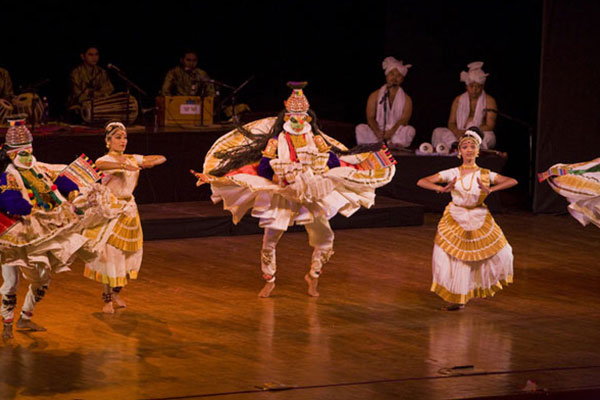

During the years when there is not enough funds to perform the play, the Mask is placed on an alter and worshipped, in front of which the 'Pallayam', an offering of steamed rice, jagery, curd and plantain spread on a plantain leaf, etc., is offered and the songs and dialogues of the play are recited. Named as Narasimha Sirasu (Narasimha mudi), the mask is kept and worshipped in the village temple and is brought to the stage only in the specific time after due rituals are performed. In the same scene, it is a spectacular view to see two Iranian, two Leelavathy and two Prahaladhan performing simultaneously, a specialty of the theatre of these villages.Ī sacred mask of the lion face of Narasimha made out of wood from a fig tree plays a prime role in this theatre. Also it is a unique presentation of two persons playing the same role, who appear simultaneously as a twin perfomance in Archutthipattu, Narthevankudikadu, etc. In all the places only men perform even the role of female characters but for Archutthippattu where girls below ten years perform the women characters.

As a vow to the deity and out of devotion every year there is a considerable number of new comers however, the roles of Iranian, Leelavathi and Prahaladhan are performed only by senior artists. The main roles are performed by the well experienced persons while the other roles are allocated for the new comers. The participants, being non-professional locals, are trained by rehearsals,a few weeks prior to the performance, by a senior Bhagavathar or a KoothuVadhiyar.Songs, dialogues, acting and all that is required are taught. In Thepperumanallur it is performed in the Varadarajaswami temple and in Bagathur in an open ground. Ramaswami Aiyar Foundation, Chennai, 1996.Unlike the Bharatha koothu in the Northern parts of Tamilnadu where the entire village becomes the stage, the Iranian Nadagam/Prahaladha nadagam is performed on a stage prepared for this purpose blocking a main street of the village. Ramaswami Aiyar Foundation, Chennai, 2005.Ĭ.P.

This book also describes about the sociological and cultural dimensions of these folk games.Ĭ.P. These folk games have been a source of endless enjoyment to the rural people and continue to be played today, though many of the traditional games are giving way to other games.

Balambal takes you back to the folk games played in Tamil Nadu. Ramaswami Aiyar Foundation, Chennai, 2007ĭescribes folk dances, such as the kummi, kolaattam, kaavadi, karagam and impersonation dances folk music, such as the villupattu, harikatha, lavani occupational songs, folk ballads and lore and lullabies musical instruments including, percussion instruments, string instruments, wind instruments, folk bands folk theatre such as therukoothu, bhagavatha mela, kuravanji and puppetry, both bommalaatam and tholu bommalaatam.īy Nanditha Krishna see also Publications on Performing Arts This goes to affirm the mosaic of diverse traditions that form the great Indian sub-continent.Ĭ.P. Ramaswami Aiyar Foundation’s tribute to a great people and a great tradition. This book is a documentation of four ancient and unique tribes who have lived undisturbed in the oldest human settlements of South India. TRIBES OF NILGIRIS – Arta & Crafts of the Kotas, Kurumbas, Irulas & Paniyas (English) Some of these publications (marked with *) are available for reference in the C.P.


 0 kommentar(er)
0 kommentar(er)
